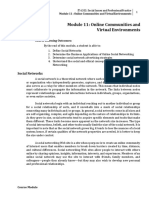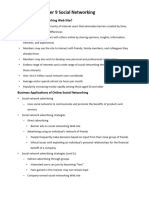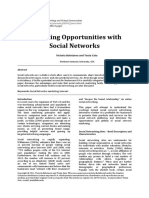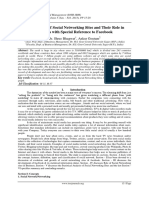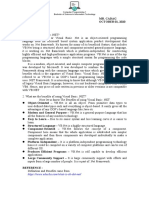0% found this document useful (0 votes)
63 views7 pagesModule 8 - Social Networking
This module explores social networking, its uses, and the ethical issues surrounding it, including cyberbullying and cyberstalking. It highlights the role of social networking in business, advertising, recruitment, and customer service, as well as the emergence of online virtual worlds. The document emphasizes the need for ethical considerations in online interactions and the impact of virtual environments on societal behavior.
Uploaded by
Chello SorianoCopyright
© © All Rights Reserved
We take content rights seriously. If you suspect this is your content, claim it here.
Available Formats
Download as PDF, TXT or read online on Scribd
0% found this document useful (0 votes)
63 views7 pagesModule 8 - Social Networking
This module explores social networking, its uses, and the ethical issues surrounding it, including cyberbullying and cyberstalking. It highlights the role of social networking in business, advertising, recruitment, and customer service, as well as the emergence of online virtual worlds. The document emphasizes the need for ethical considerations in online interactions and the impact of virtual environments on societal behavior.
Uploaded by
Chello SorianoCopyright
© © All Rights Reserved
We take content rights seriously. If you suspect this is your content, claim it here.
Available Formats
Download as PDF, TXT or read online on Scribd
/ 7



